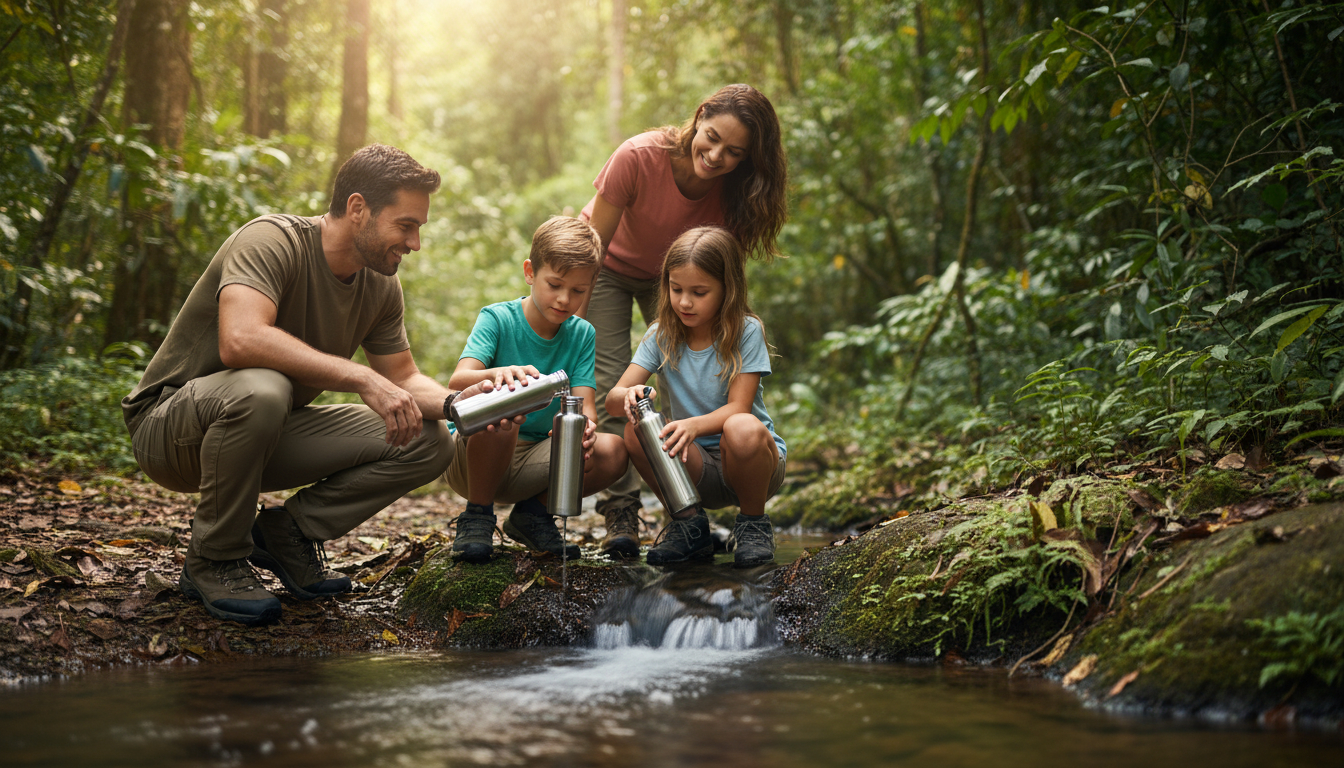The desire to explore the world is often intertwined with the hope of preserving it for future generations. For parents, this link is particularly poignant: how can we show our children the planet’s wonders without contributing to their decline? The answer lies in mastering the practice of traveling sustainably with children and families. This involves more than just recycling; it’s about making conscious choices that reduce your collective ecological footprint, support local economies ethically, and, most importantly, educate your children on the value of responsible exploration.
Sustainable family travel is a powerful tool for environmental and cultural education. This guide provides a framework for integrating eco-conscious principles into every stage of the trip, from planning and packing to on-the-ground activities. By adopting these strategies, families can ensure their adventures are a net positive contribution to the destinations they visit, setting an enduring example for their young explorers.
Phase 1: Planning for Minimal Impact
The principles of traveling sustainably with children and families begin at the booking stage, focusing on destination and transportation.
1. Choose Eco-Certified Accommodation
Look beyond standard hotels. Seek out certified eco-lodges, locally-owned guesthouses, and accommodations that demonstrate a commitment to sustainability:
- Certifications: Look for recognized standards (e.g., LEED, Green Key, or local national eco-labels).
- Infrastructure: Check if they use renewable energy, have water conservation programs (e.g., rainwater harvesting), and source food locally. Booking such places ensures your tourism dollars support businesses with sustainable ethics.
2. Prioritize Sustainable Transportation
As discussed in the previous article, transportation is the biggest contributor to travel emissions.
- The “Rule of the Train”: When possible, travel by train. Turn the train journey into an adventure, bringing along engaging activities and snacks. This makes the journey itself part of the sustainable experience.
- Local Transport: Use public buses, trams, and subways, which significantly reduce your per-person carbon footprint compared to taxis or rental cars. Children often find local transport to be a fascinating cultural immersion activity.
Phase 2: Packing and Consumption Strategies
Packing for a family sustainably requires forethought regarding waste and single-use plastics—a major challenge when traveling sustainably with children and families.
3. Zero-Waste Kits for Kids
Eliminate single-use plastics by preparing a personalized zero-waste kit for each child:
- Reusable Water Bottles: Essential for everyone. Use water purification tablets or a filtered bottle in areas where tap water is unsafe.
- Cloth Napkins and Reusable Cutlery: Avoid disposable paper and plastic utensils from street vendors or takeaway spots.
- Snack Containers: Pack reusable silicone bags or containers for snacks bought at local markets.
4. Mindful Clothing and Gear
Opt for ethical and durable gear. Choose clothing brands that use sustainable materials (organic cotton, recycled polyester) and, whenever possible, rent large items (strollers, bulky toys) at your destination instead of flying with them.
Phase 3: On-the-Ground Cultural and Environmental Education
The greatest impact of traveling sustainably with children and families is the educational component.
5. Support the Genuine Local Economy
- Eat Local: Prioritize locally-owned restaurants, farm-to-table eateries, and food markets. Avoid international chains. This supports local farmers and keeps wealth within the community.
- Buy Local Crafts: When buying souvenirs, purchase genuine, locally-made crafts directly from the artisan. Avoid mass-produced items made overseas. Use this as a teaching moment to explain fair trade and supporting livelihoods.
6. Turning Sustainability into a Game
Involve children in the sustainable practices:
- Water Warriors: Make a game of taking shorter showers to conserve water.
- Recycling Detectives: Challenge them to find the correct recycling bin (this is great for engaging with local language/signs).
- Nature Clean-up: On a beach or park visit, dedicate 10 minutes to a “mini-clean-up,” teaching them the physical effects of litter.
7. Respect for Wildlife and Culture
Teach children that animals and cultural sites are not just tourist attractions:
- Responsible Wildlife Viewing: Choose ethical tour operators that maintain a respectful distance from animals. Never touch or feed wildlife.
- Cultural Rules: Teach them simple phrases (thank you, please) and local customs (taking off shoes, covering shoulders). These acts of respect are the most important part of traveling sustainably with children and families, fostering global citizenship and responsibility.
By making sustainability a family-wide project, parents not only reduce their footprint but instill lifelong values of environmental stewardship and global respect in their children, ensuring the world they hope to explore remains vibrant for their own future adventures.


